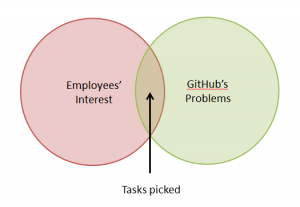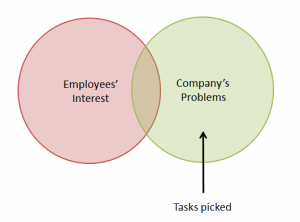
(discuss on Hacker News)
I believe that many team leaders feel constantly under fire because nobody tells them the entire story. They are too busy loading the ship with goods and pushing it forward, without thinking about their crew, their ship, or for that manner, the big blue ocean and the dangers in sailing to the unknown.
Let me start with what your boss does tell you:
- You need to deliver results.
- You need to deliver on time.
- You need to communicate – raise flags, synchronize effort with other teams etc.
So you’re leaving your one-on-one meetings with your boss “checking” every one of the bullets above, yet, you feel as if you’re missing something. You’re exhausted.
It gets even worse.
If things are going well (for the company that is,) you are suddenly asked to hire more people. “Awesome, right?” your boss says; “Hell no!” you reply, “I’ve got so much on my plate. I don’t know how I could manage more people without completely losing it!”
It feels strange. You deliver great results on time, you are communicative and you love your teammates, so why do you feel out of control? Why cannot you relax?
There is an underlying expectation that nobody told you about – as a team lead, it is your job to enable your company’s scalability. [Tweet it!]
“Scalable Company” can align and adjust its team and goals without losing its unique culture (vision, values and people) in the process.
It means changing direction if the business doesn’t make sense anymore, without feeling resentment: “but I’ve invested so much time in it!” It means growing from a team of 15 to 50 without feeling pinned down: “oh gosh, it used to be fun working here. Now I need to write a 50-page document just to get something to move forward.”
Just like a scalable architecture – you can bring more users, enhance your product and the experience remains smooth. Many things happen under the hood to support it, but the end result remains the same.
Adjusting to a new reality means it will be different, but not necessarily “bad different.” It should feel as if you were already thinking about it and prepared a few plans to make it into a smooth(er) transition. There is nothing worse to a company than an ad-hoc growth without strategic planning in advance. It will only cause more panic.
Because most of us are not aware of this hidden expectation, we continue to work hard on our deliveries, but constantly fail when the company needs to adjust. “There was never enough time to prepare for it!” you surrender, mumbling “Nobody told me we need to change everything” as you exit the door. It’s too late by now.
It shouldn’t have to be this way.
In order to enable scalable companies, team leads have to proactively prepare for it:
1. Clear the way
That means detecting blockers and think of ways to remove them. Notice I didn’t say to actually remove it on your own necessarily. It’s based on the maturity of the team. It’s your job however, to monitor your team’s velocity, spot major issues and follow up on them.
2. Work on things that move the needle
Are you working on the right things? Do you help your company succeed? Do you believe in the direction your company is taking? Do you provide constructive feedback to your boss and colleagues? You better! Your teammates will feel it if you don’t. You can “hide” it for a few months, and justify dumb business decisions you do not agree with. Maybe you feel these decisions are dumb just because you didn’t have time to ask more questions? Eventually, your team expects you to push them, and if you don’t believe in your own words, people will stop trusting you.
3. Teach others how to ask critical questions
You can’t be everywhere. Assume two of your teammates are working closely with another team. Do you trust them to ask the right questions? For example: should we be ready for scale on day 1 or can we create a simple solution and monitor usage? Do we know how to test it? Do we know how to deploy it? What can go wrong? What will we do if it does go wrong? Do we know how to monitor it? What is our success metric for this feature? Can we break it into small milestones and reduce risk? Can we deliver value earlier?
4. Make your people happy
Here is why – you are responsible for your team’s happiness because losing your people will slow you down to a point where the culture might be damaged. And yes, you should make them happy for all of the other reasons you heard before. The alternative, if it wasn’t clear so far, can kill your company’s culture. It would be hard to recover from that.
5. Delegate as much as possible
Not only to free a couple of hours for “work time,” but also to distribute pressure and responsibilities. It shouldn’t be only up to you to handle everything. That means you will also need to let them fail. Yes I know, you think you can do it better than them, but can you teach them or is it a God’s gift? You need to give them time and encourage them when they are putting the effort.
6. Always have a plan for growth
You have to pretend as if your team is now two times bigger. Work backwards. Will the team continue to execute, or will it get stuck because you failed to scale yourself? Do you have team lead candidates that you started to mentor? Do you know how to mentor other team leads? Can someone help you with it? Can your technical leads support you in this transition? Did you tell them that?
7. Stay hands-on by working on non-critical features
You need to keep your edge so you can still teach others how to ask the right questions, help with priorities and solve complex conflicts, if needed (again, depends on team maturity level).
Next time you have a one-on-one session with your boss (or your peers,) ask for feedback on your “scalability skills.” You’d be surprise how it could reduce the amount of pressure on your shoulder. It’s time to breathe again.
p.s. check out my latest side-project, SoftwareLeadWeekly – A free weekly email, for busy people who care about people, culture and leadership.
———
Photo credit – jdhancock




